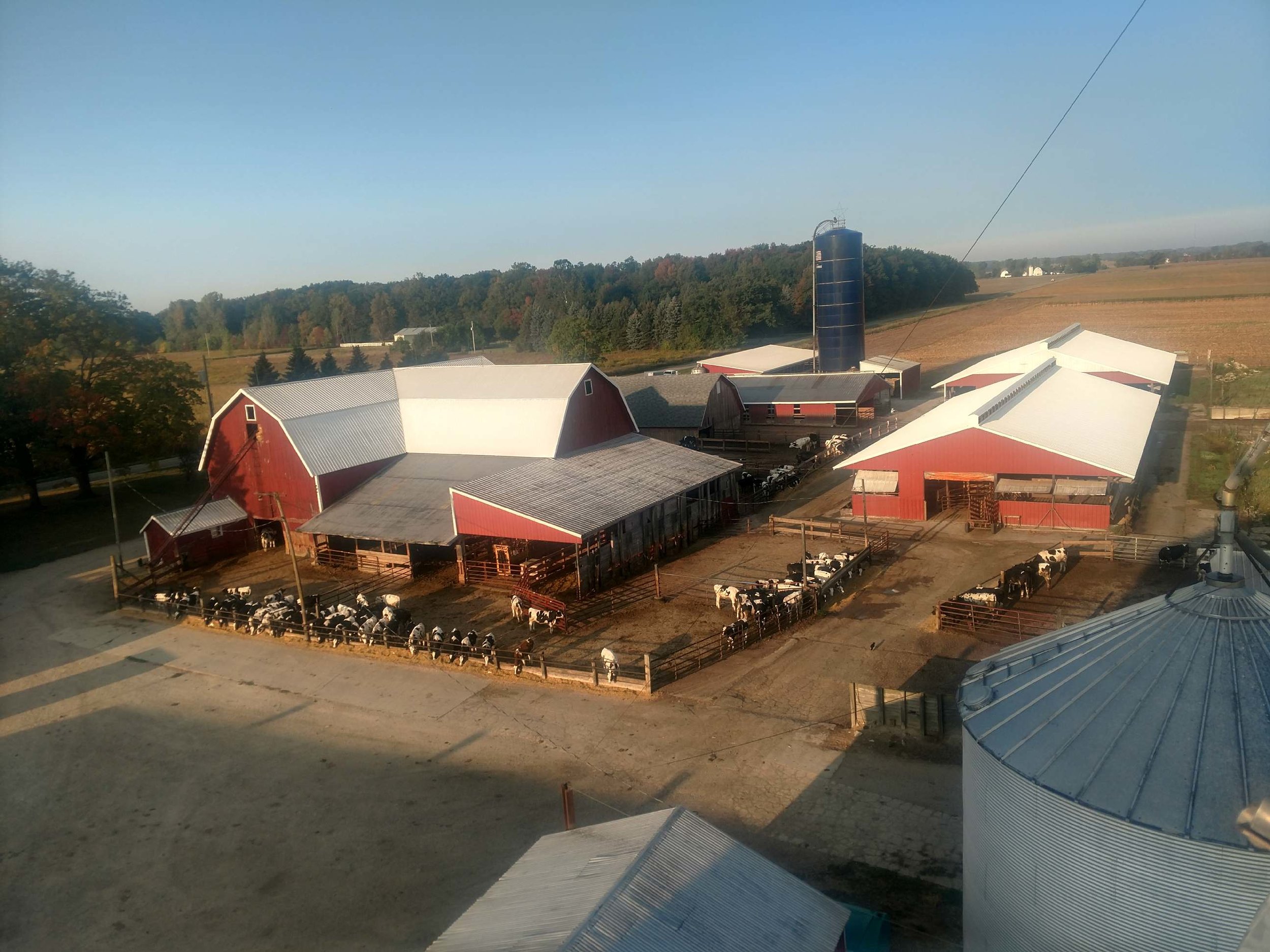Feedlot Myths Busted!
Raising and selling cattle is how we make our living. If the cattle get sick and die, don't grow well, aren't fat enough, or aren't efficient enough it directly affects our bottom line. Now, raising beef cattle isn't all about the bottom line and the fact that we literally spend thousands of dollars each year on vaccines, vet bills, antibiotics, and facility upgrades prove that we genuinely care about our livestock. The truth of the matter is, if we don't make money we can't raise cattle so we have to consider how money plays into our farm at each decision we make.
A modern feedlot isn't as factory-like as some people would like you to believe. It still feels like a farm!
Feedlot: A Dirty Word
We always hesitate to tell someone new to our operation that we run a beef feedlot. This is because the word "feedlot" has a lot of negative connotations surrounding it. When someone hears the word feedlot they might think the cattle are in tiny pens, squished together so tight they can't lay down, being force-fed feed that isn't good for them. In fact, the word "feedlot" just refers to the area where livestock are grown at.
Barns Everywhere
Yes, we have a lot of barns, and each one is used to provide the cattle with the best quality of life possible!
Now, in our feedlot, every steer has a barn to go into and the majority have a concrete lot to go outside on. Michigan, in all its rainy goodness, does not allow for us to have miles of uncovered pens full of cattle. In drier parts of the country, the cattle do live without a roof in dirt lots at the same density that our cattle live and it works great! A barn, or at the very least a windbreak, allows the cattle to get out of the elements and concrete underneath their hooves makes it so they aren't standing in knee-deep mud.
Space Per Steer
We use the square feet per pen to determine the number of cattle that will comfortably fit in that pen.
Raising cattle in a confined space does not mean the cattle are stacked together like cordwood. In fact, our pens are filled at a very specific density to allow for each steer to have the optimum room to live. We give each animal about 40 square feet of barn space (this does not include the space they have outside) so that they have enough room to stand and lay down inside. Any less space per head and we start seeing a decrease in overall health which is something we go to great lengths to avoid. It is very important to us that each steer has plenty of room to grow and relax.
Meeting Nutrient Requirements
Each pen gets a specific ration and number of pounds of that ration to best meet their nutritional needs.
Cattle in a feedlot do not have access to pasture, all of their food is delivered right to their pen. We feed our cattle a total mixed ration (TMR), once per day, directly into their feed bunk. We spend countless hours on nutrient management and consulting nutrition experts to come up with the best possible ration we can. We know exactly how much protein, vitamins, minerals, digestible fiber, and non-digestible fiber the cattle need to meet their requirements. What we do is take their requirements and work with the ingredients we have until we come up with a perfect TMR. We use different TMRs depending on the size of the cattle and how we want them to grow at that size. So, even though our cattle don't graze like they might in nature we have the ability to perfectly meet their nutrient requirements while they are in the feedlot.
War on Agriculture
Honestly, we don't know why people have decided to attack modern feedlots. Through amazing technology and research, we are better able to raise happier and healthier steers than ever before! You wouldn't ask a doctor to use 18th-century medical practices to save your life, so why are so many people asking farmers to use outdated methods to feed the world? It's ever farmer's choice how they run their operation and this is the choice we've made to run ours, which is why it's so important for us to spread the truth about modern feedlots!
Thanks for reading!
John and Emily Crain




